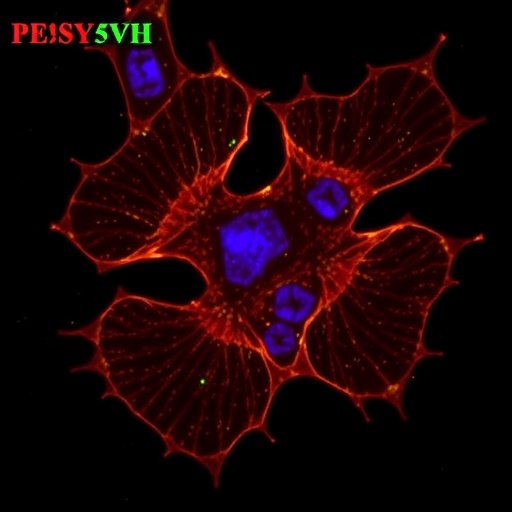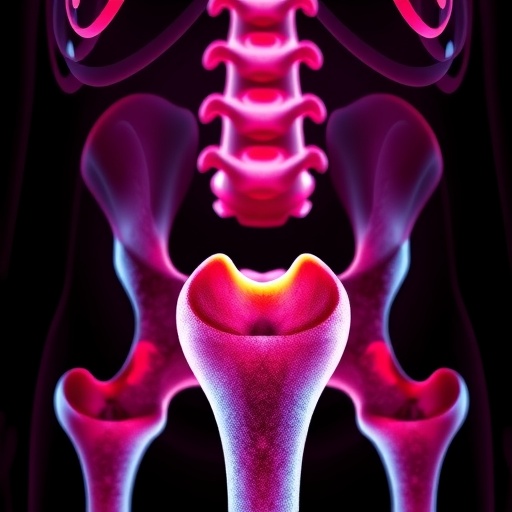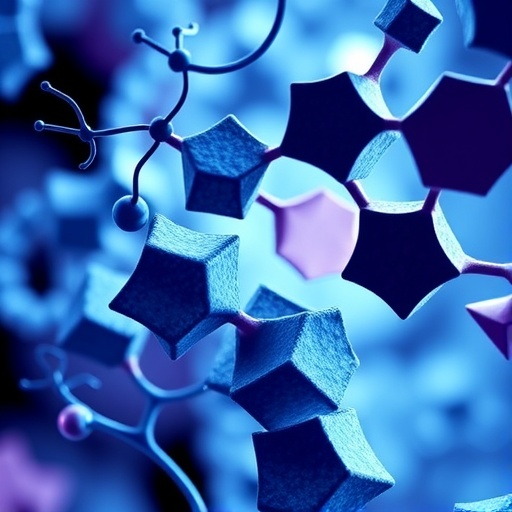
In a groundbreaking study published in Medical Oncology, researchers have unveiled the potent antiproliferative and apoptotic effects of Pervari honey on SH-SY5Y neuroblastoma cells, shedding new light on the potential of natural products in neuroblastoma treatment. The investigation delves deep into the molecular mechanisms by which this unique honey variety exerts its influence, emphasizing its relevance in both cancer biology and therapeutic innovation. Neuroblastoma, a cancer arising from neural crest elements of the sympathetic nervous system, remains a significant challenge in pediatric oncology. Current treatments, while effective to a degree, often carry severe side effects and face resistance issues, underscoring the urgency for novel, less toxic therapeutic agents.
Pervari honey, sourced from a specific endemic region, contains a complex array of phytochemicals and bioactive compounds, which are hypothesized to be responsible for its medicinal properties. This study meticulously investigates how Pervari honey impacts cell cycle regulation, critical apoptotic pathways, and cellular viability in neuroblastoma cell lines. The research team employed the SH-SY5Y human neuroblastoma cell line as a robust in vitro model, widely recognized for its utility in neuro-oncology research and neurobiology due to its capacity for differentiation and tumorigenic characteristics.
One of the pivotal findings of this study is the significant inhibition of cellular proliferation upon treatment with Pervari honey. The honey’s bioactive constituents appear to arrest the cell cycle at specific checkpoints, effectively halting the proliferative machinery that drives tumor growth. This action not only reduces tumor cell expansion but also potentiates the cells’ susceptibility to apoptotic signals. In this context, apoptosis, or programmed cell death, is a critical mechanism disrupted in many cancers; restoring this pathway is a promising therapeutic strategy.
.adsslot_VqfPG2SzEw{width:728px !important;height:90px !important;}
@media(max-width:1199px){ .adsslot_VqfPG2SzEw{width:468px !important;height:60px !important;}
}
@media(max-width:767px){ .adsslot_VqfPG2SzEw{width:320px !important;height:50px !important;}
}
ADVERTISEMENT
Furthermore, the study reveals that exposure to Pervari honey elevates the expression of pro-apoptotic markers while concurrently downregulating anti-apoptotic proteins within treated neuroblastoma cells. This dual modulation triggers apoptotic cascades, including mitochondrial membrane potential disruption and activation of caspase enzymes, which are central executioners in the apoptotic pathway. The precise orchestration of these molecular changes paves the way for efficient elimination of malignant cells and highlights the therapeutic potential of compounds derived from Pervari honey.
The research methodologies harness advanced techniques such as flow cytometry for cell cycle analysis, Western blotting for protein expression, and MTT assays to assess cell viability, providing robust and reproducible data. Such comprehensive analyses underline the multifaceted impact of Pervari honey on tumor dynamics beyond mere cytotoxicity. Notably, the selective toxicity to neuroblastoma cells without significant damage to normal cells strengthens the case for its potential as an adjunct or alternative to conventional chemotherapy.
Scientific interest in natural products as oncological agents has surged in recent years, propelled by the intricate chemical diversity and evolutionary adaptations found in nature. Honey, long celebrated for its antimicrobial and wound-healing properties, is increasingly scrutinized for anticancer attributes. The uniqueness of Pervari honey, enriched by its botanical origins and local flora, contributes a distinct phytochemical profile that seems particularly effective against neuroblastoma cells.
Moreover, the implications of this study extend into understanding tumor microenvironment interactions. The antiproliferative effect seen with Pervari honey treatment may also influence the surrounding stroma, immune cells, and vascular elements that collectively sustain tumor growth and metastasis. Researchers posit that such natural compounds could modulate immunological responses, augmenting the body’s intrinsic defenses against cancer progression.
In light of these findings, the future of oncological therapy could see a paradigm shift emphasizing integrative approaches. Pervari honey and its isolated active components might synergize with existing chemotherapy drugs, potentially enhancing efficacy and reducing adverse effects. This is particularly pertinent in pediatric populations, where minimizing toxicity is paramount. Long-term, rigorous clinical trials remain essential to translate these promising in vitro results into safe, effective clinical interventions.
Additionally, the study paves the way for biotechnological exploration aimed at identifying and synthesizing the key molecules driving these therapeutic effects. Isolation of specific flavonoids, phenolic acids, or other secondary metabolites within Pervari honey could facilitate the development of novel anticancer drugs with refined specificity and potency. Such a targeted approach may overcome limitations associated with complex natural mixtures that pose challenges in standardization and dosing.
The broader scientific community should also consider ecological and sustainability factors in harnessing Pervari honey. Conservation of the unique habitats where these bees forage is necessary to preserve the integrity and bioactivity of the honey. Ethical sourcing and environmentally conscious apiculture practices will ensure that any increased demand driven by medical applications does not compromise biodiversity or local ecosystems.
It is equally important to appreciate the multidisciplinary collaboration underlying such research—combining expertise from oncology, pharmacology, biochemistry, and ethnobotany. This integrative methodology enhances the reliability of findings and their potential applicability. It also spotlights the importance of revisiting traditional knowledge within modern scientific frameworks to unlock new therapeutic avenues.
In sum, the discovery of Pervari honey’s multifaceted anti-cancer properties marks a significant milestone in natural product research. Its ability to induce cell cycle arrest, provoke apoptosis, and inhibit neuroblastoma cell growth in vitro spotlights a promising frontier in the ongoing battle against pediatric malignancies. Continued investigation, including in vivo studies and clinical validations, will be key to realizing its full therapeutic potential.
As the quest for safer, more effective cancer treatments presses on, nature’s apicultural treasures such as Pervari honey remind us of the untapped pharmacological goldmine inherent in biodiversity. This research not only offers hope for patients afflicted by neuroblastoma but also invigorates the broader scientific endeavor to integrate natural compounds into mainstream medicine strategically.
The compelling evidence presented by Altin-Celik and colleagues invites a reevaluation of how we perceive and utilize natural substances in oncology. By bridging traditional remedies with cutting-edge molecular biology, they chart a course toward innovative, sustainable cancer therapies that prioritize efficacy and patient quality of life. The unfolding story of Pervari honey’s therapeutic potential exemplifies the transformative power of scientific inquiry rooted in the natural world.
Subject of Research: Antiproliferative and apoptotic effects of Pervari honey on SH-SY5Y neuroblastoma cells
Article Title: Antiproliferative and apoptotic effects of Pervari honey on SH-SY5Y neuroblastoma cells
Article References:
Altin-Celik, P., Derya-Andeden, M., Eciroglu-Sarban, H. et al. Antiproliferative and apoptotic effects of Pervari honey on SH-SY5Y neuroblastoma cells. Med Oncol 42, 394 (2025). https://doi.org/10.1007/s12032-025-02963-3
Image Credits: AI Generated
Tags: antiproliferative effects of honeyapoptotic pathways in neuroblastomabioactive compounds in honeycell cycle regulation in cancernatural products in cancer therapyneuro-oncology research advancementsneuroblastoma cell viabilitynovel cancer therapeutic agentspediatric oncology challengesPervari honey neuroblastoma treatmentphytochemicals in medicinal honeySH-SY5Y cell line research





